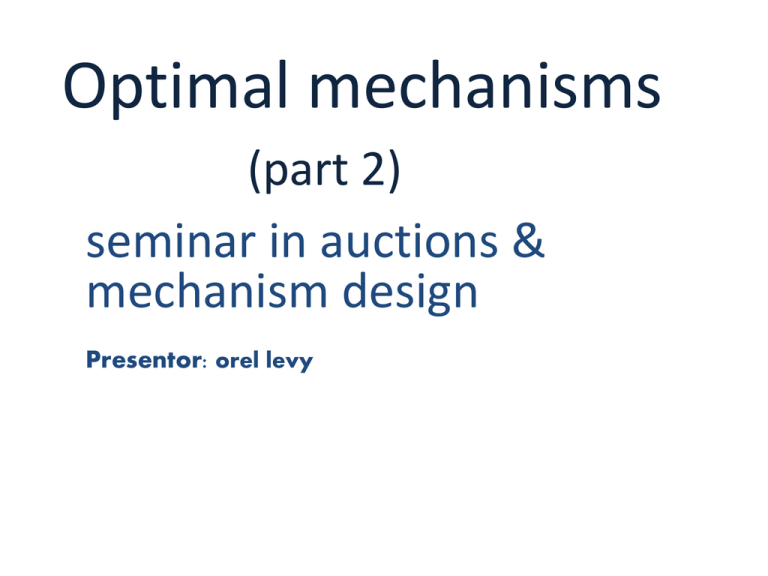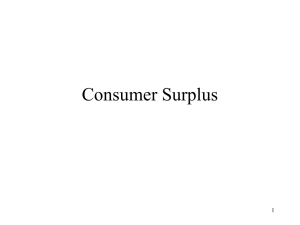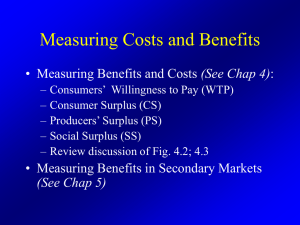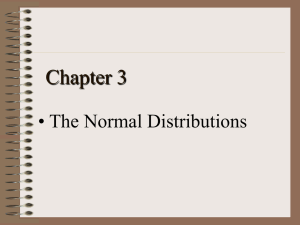Optimal mechanisms (part 2)
advertisement

Optimal mechanisms (part 2) seminar in auctions & mechanism design Presentor: orel levy Reminder Quantile Space – the quantile q of an agent with value v ~ F is the probability that the agent is weaker than a random draw from F. q = 1 – F(v) Virtual value – the virtual value of an agent with quantile q and revenue R() is the marginal revenue at q. Revenue curve specifies the revenue as a function of an ex ante probability of sale. R(q) = v(q)q distribution F is regular if its revenue curve R(q) is a concave function of q. Single – item auctions environments where feasible outcomes serve at most One agent. Our goal is to find a mechanism that optimizes virtual surplus for single-item environments. Example we will consider the uniform distribution U[0,1]. F(v) = v f(v) = 1 Example Reminder : q = 1 – F(v) R(q) = v(q)q In our example : Example The uniform distribution U[0,1] is a regular distribution R(q) ф(q) Example first We will notice that virtual value can be negative If we want to optimize virtual surplus we don’t want to allocate to any agent with negative virtual value. In our case an agent’s virtual value is non negative when his value is at least 1/2 1/2 Example Second we will notice that the virtual surplus is maximized by allocating to the one with the highest virtual value. In our example U[0,1] is regular and in regular distributions the agent with the highest positive virtual value is also the one with the highest value. Example To optimize virtual surplus and expected revenue we need an auction that will allocate to the agent with the highest value that is at least ½. We will use the second price auction with reserve ½. Definition: the second price auction with reservation price r sells the item if any agent bids above r. the price the winning agent pays is the maximum of the second highest bid and r. conclusion If F is the uniform distribution U[0,1] then the second price auction with reserve price ½ has the optimal expected revenue. We saw that this optimal revenue is 5/12. Irregular distributions Definition: an irregular distribution is on for which the revenue curve is non concave. In the case of irregular distribution the virtual valuation function is non monotone, therefore a higher value might result in a lower virtual value. ironed revenue curves Example : we want to sell an item to alice with ex ante probability q, we will offer the price v(q) to get revenue R(q)=v(q)q Problem: R() is not concave,so this approach may not optimize expected revenue. Solution : we will treat alice the same when her quantile is on some interval [a,b], regardless of her value. ironed revenue curves R(q) Φ(q) ironed revenue curves We will replace her exact virtual value with her average virtual value on [a,b].that will flatten the virtual valuation function (ironing). For q ϵ [a,b] Ф(q) = const Φ(q) Φ(q) ironed revenue curves The constant virtual value over [a,b] resolts in a linear revenue curve over [a,b]. R(q) Φ(q) ironed revenue curves if we treat alice the same on appropriate intervals of quantile space we can construct effective revenue curve Definition : the ironed revenue curve is the smallest concave function that upper-bounds R().and the ironed virtual value function is Ironed intervals are those with Meaning: alice with q ϵ [a,b] that is ironed will be served with the same probability as she would have been with any other q’ ϵ [a,b]. ironed revenue curves The allocation rule is monotone non increasing in quantile. ironed revenue curves Lemma :an agent’s expected payment is upperbounded by the expected ironed virtual surplus. Proof: ironed revenue curves Tow advantages of over 1. We can get more revenue from the ironed revenue curve ( R1(q) > R2(q) E[p1(q)] > E[p2(q)] ) 2. Ironed revenue curve is concave ironed virtual value is monotone ironed virtual surplus maximization results in a monotone allocation rule , so with the appropriate payment rule it is incentive compatible Optimal mechanisms The ironed virtual surplus maximization mechanism (IVSM): 1. Solicit and accept sealed bids b 2. 3.Calculate payments for each agent from the payment identity Optimal mechanisms We saw that and are monotone , therefore with The appropriate payments (critical values) truthtelling is a dominant strategy equilibrium. Theorem : the ironed virtual surplus maximization mechanism is dominant strategy incentive compatible. to show that the ironed virtual surplus mechanism is optimal we need to argue that any agent with value within the ironed interval receives the same outcome regardless of where in the interval his value lies.






